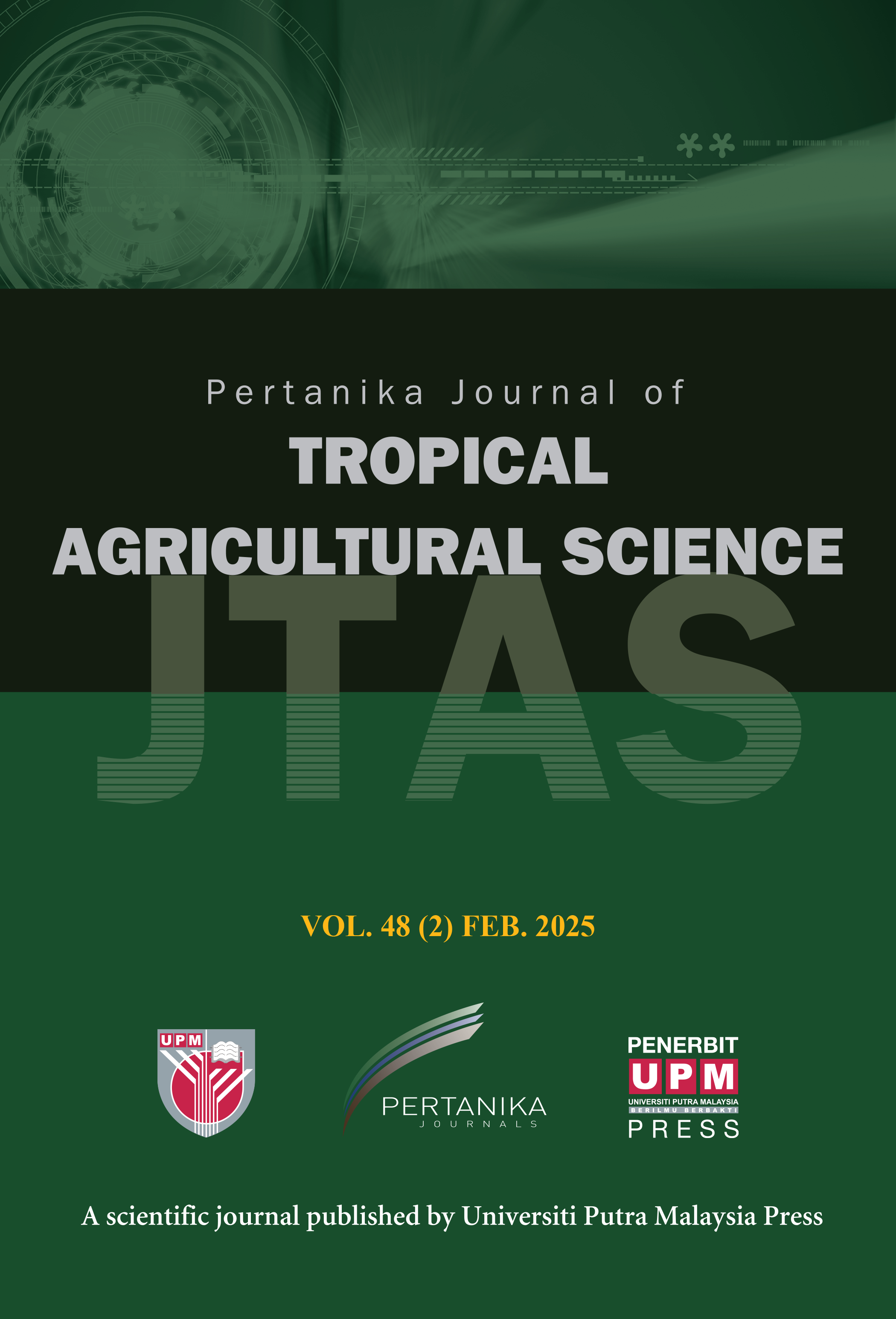PERTANIKA JOURNAL OF TROPICAL AGRICULTURAL SCIENCE
e-ISSN 2231-8542
ISSN 1511-3701
Q Fever in Small Ruminants: A Review on Epidemiology, Risk Factors, and Diagnostic Approaches
Khaiyal Vili Palani and Rozaihan Mansor
Pertanika Journal of Tropical Agricultural Science, Volume 48, Issue 6, November 2025
DOI: https://doi.org/10.47836/jtas.48.6.10
Keywords: Coxiella burnetii, diagnostic methods, epidemiology, Q fever, risk factors, small ruminants, zoonotic disease
Published on: 2025-11-25
Coxiella burnetii, which causes Q fever, is a significant zoonotic disease targeting livestock, particularly sheep and goats, with global implications for public health and agriculture. The disease presents diverse epidemiological patterns across regions, with goats often exhibiting higher seroprevalence rates compared to sheep. Transmission occurs primarily through breathing in contaminated airborne particles, with environmental determinants such as farm management practices and wind speed playing crucial roles in disease spread. Risk factors include animal age, flock size, tick infestations, environmental conditions, and poor biosecurity measures. Serological methods, primarily enzyme-linked immunosorbent assay (ELISA), remain widely used for large-scale surveillance due to their cost-effectiveness, sensitivity, and ability to detect past exposure. On the other hand, polymerase chain reaction (PCR) offers higher specificity. It is preferred for detecting active infections and environmental contamination, whereas the immunofluorescence assay (IFA) is a reliable confirmatory test. Emerging molecular techniques, including metagenomic next-generation sequencing (mNGS), surface plasmon resonance (SPR) biosensors, and up-converting phosphor technology-based lateral flow (UPT-LF) assay, demonstrate promise for enhancing diagnostic accuracy and early detection. However, regional disparities in diagnostic approaches, insufficient surveillance data, and gaps in epidemiological research continue to pose significant challenges. Addressing these gaps through integrated diagnostic strategies, affordable PCR implementation, and targeted research on transmission dynamics in livestock, wildlife, and environmental reservoirs is essential. Such efforts will strengthen Q fever control and prevention measures, minimising its impact on public health and livestock productivity.
ISSN 1511-3701
e-ISSN 2231-8542




